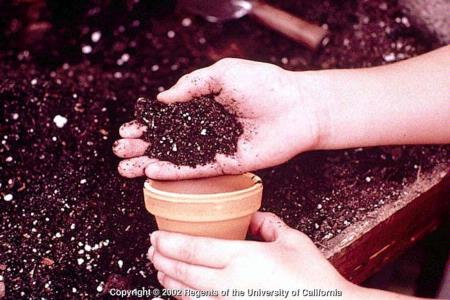Understanding Soil
By Andrea Peck UCCE Master Gardener
Just how important is soil? Sara B. Los Osos
Though soil is simply the top layer of dirt, it should not be dismissed as “all the same.” Composed of rock sediment, animal microorganisms and plant matter, soil is an important factor for successful plant growth. Because plants get most of what they need through the roots, the composition, texture and nutrient level of your soil has a great impact.
There are three general types of soil: sandy, loamy and clay. Visually like a desert or dune, sandy soil is loose and dusty when dry. Sandy soils are coarse, which create wide, porous spaces between soil particles. Quick to drain and low in nutrients, this type requires a little bit of watering on a frequent basis. Native and Mediterranean plants thrive in this type of soil, as do cacti and succulents. On the opposite side of the spectrum is clay soil. Thick and sticky when wet, hard as a rock when it's dry, it's easy to recognize. This type has fine particles which retain water, minerals and oxygen. Most plants have a difficult time growing in a clay environment. Loamy soil is the middle ground. Rich in organic matter, loamy soil has plenty of nutrients. It retains water which helps keep the plant hydrated and assists in nutrient uptake, yet it drains well. The vast majority of plants have no trouble feeling at home here.
Soil pH is measured on a range from 1-14, where 14 is alkaline and 1 is acidic. Balanced or neutral conditions fall to 7.0 on the pH scale. The pH level influences nutrient uptake, microorganism activity and the solubility of minerals. Most plants do best when the pH is between 5.5 and 7.5.
Proper plant growth requires soil that contains ample amounts of the 20 essential nutrients such as nitrogen and phosphorus. Care for your soil by using garden compost and mulching with materials that break down slowly. This adds nutrients, creates loamy soil consistency and maintains a neutral pH.
With a bit of effort and maintenance your plants will settle in and let their roots get comfy.
